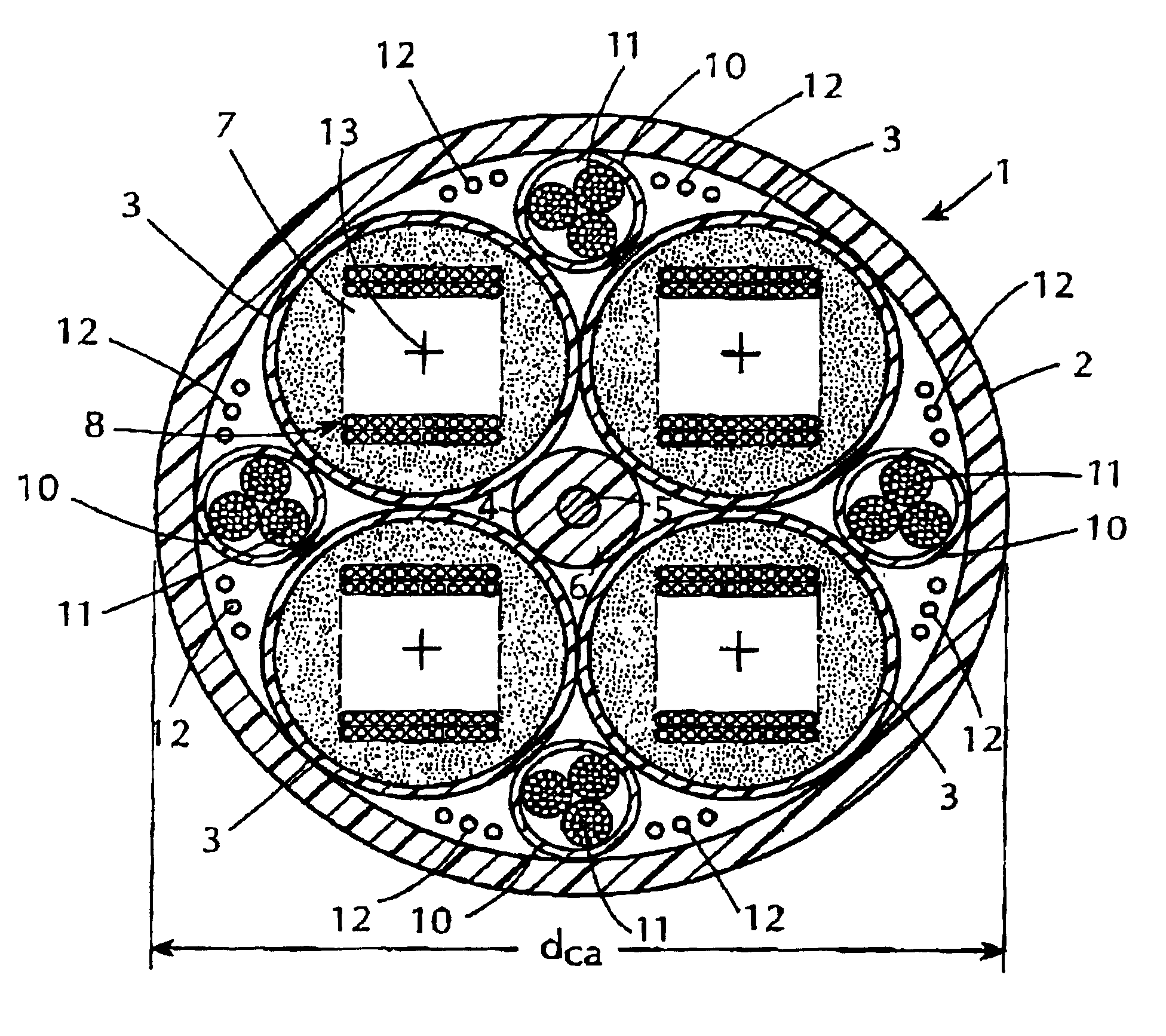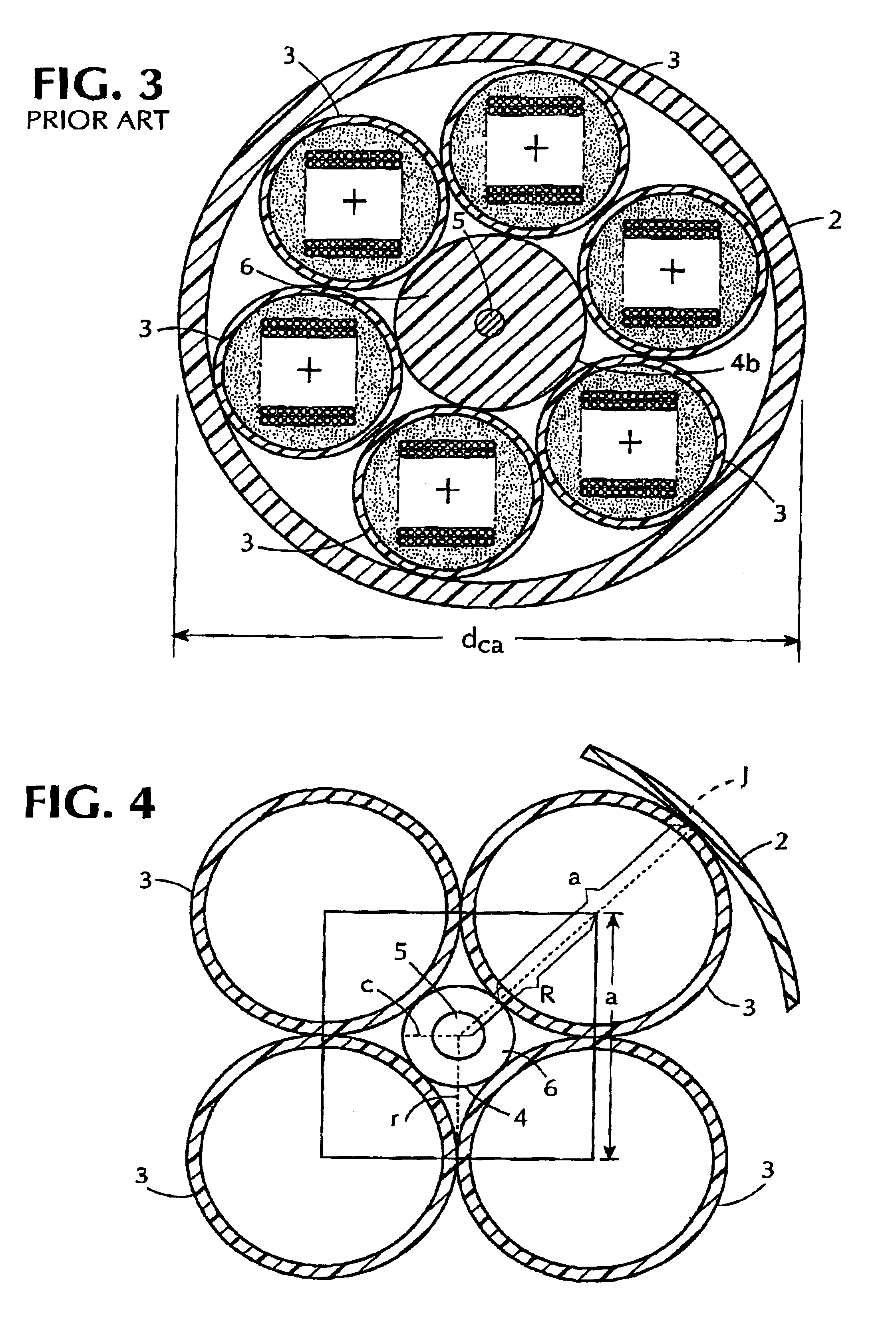High fiber count optical fiber cable with buffer tubes around central strength member
a buffer tube and optical fiber technology, applied in the field of optical fiber communication cables, can solve the problems of increasing the diameter of the cable, reducing the flexibility of the loose tube cable, and disturbing the minimum number of fibers not being accessed, so as to increase the total number of optical fibers, reduce the diameter, and increase the space available
- Summary
- Abstract
- Description
- Claims
- Application Information
AI Technical Summary
Benefits of technology
Problems solved by technology
Method used
Image
Examples
Embodiment Construction
A four buffer tube embodiment of the optical fiber cable of the invention is illustrated in FIG. 1, but before describing the cable 1 illustrated in FIG. 1, the difficulties in designing an optical fiber cable which can be fed in a 1.5 inch (38.1 mm) duct and which has substantially in excess of 1000 optical fibers must be considered. Reference to the schematic diagram of FIGS. 2-4 will be made for this purpose.
The space within the cable jacket 2 is most efficiently used for containing optical fibers when the buffer tubes 3 contact each other and extend from the outer surface of the central strength member to the inner surface of the jacket 2. Also, contact of the buffer tubes 3 with the outer surface of the central strength member 4, 4a, 4b around which the buffer tubes 3 are wound simplifies the manufacturing process. The core 5 of the strength member, which is preferably a steel wire or a bare e-glass and which supplies most of the resistance to tension and compression forces on ...
PUM
 Login to View More
Login to View More Abstract
Description
Claims
Application Information
 Login to View More
Login to View More - R&D
- Intellectual Property
- Life Sciences
- Materials
- Tech Scout
- Unparalleled Data Quality
- Higher Quality Content
- 60% Fewer Hallucinations
Browse by: Latest US Patents, China's latest patents, Technical Efficacy Thesaurus, Application Domain, Technology Topic, Popular Technical Reports.
© 2025 PatSnap. All rights reserved.Legal|Privacy policy|Modern Slavery Act Transparency Statement|Sitemap|About US| Contact US: help@patsnap.com



